|
Mathematical
Miracle of the Quran, Miracle 19 of the Quran, Ultimate Mathematics of
the Quran, code 19 of the Quran, religiojnwhistleblower.com, Behruz Mofidi
Shirazi, Rashad Khalifa, Ali R Fazely.
Allah's
Provisions and Pharmacy
Allah is the only Healer with
all the herbal medicines that He created for us. Ever since Adam and children
of Adam and after them, the ones whom carried with Noah and then Children
of Israel, up to our grand parents, and our parents, Allah was the only
source of healing for them. when a person would get sick, would use herbs
created by Allah in order to get cure or use Cool Wash treatment as Allah
prescribed for Job in the Scientifically proven Arabic Ghor-on, based
on mathematics, the exact science.
In chapter 38 of the Arabic
Ghor-on, Allah tells Job how to cure himself with Cool wash and
Herbs.

38:41
- And remember Our servant Job, when he called upon his Lord, indeed Satan
has afflicted me with hardship and pain.

38:42
-
Hit the ground with your foot. This is a Cool
Wash as well as a source of drink.

38:43
- And We granted him his family and doubled them as a mercy from Us as
well as a reminder for those who possess Intelligence.

38:44
- And take this Herb
in your hand and apply it and do not go wrong. We indeed found him steadfast.
He was surely a good servant, he was obedient.
Or Allah thought Ebrahim that
our body will Heal itself, as Abraham says,

26:78
- He is the One who has created me and he then guides me.

26:79 -
And He is the One who feeds me and waters me.

26:80 -
And when I get sick, He heals me.

26:81 -
And He is the One who puts me to death then resurrects me.
Allah gave Ebrahim his guidance
and knowledge, because Allah was aware of him. Through Allah given intelligent
and knowledge, Ebrahim could find Allah and, he could find out that Allah
is the one who heals people when ever they get sick, without having microscopes
and computers. Yet today's deceived pharmaceutical people can not recognize
this fact. In our generation, satan came up with pharmaceutical medicines
and people are following him with an open eyes.
Did you know every year in
U.S.
39,000 People Die of Unnecessary
Surgery and other Errors in Hospitals
80,000 People die of Infections
in Hospitals
106,000 People Die of Adverse
Drug Reactions
Total of 225,000 People
Die of Modern Medicine
652,486 People die of Heart
Disease
553,888 People Die of Cancer
These people die of pharmaceutical
poisons called medicines and, under doctors care, or better yet because
of careless and unknowledgeable doctor. And the rest of us die of the
life stile created by chemical companies who have poisoned our soil, food
supplies, animals, water and air. We are eating much of the wrong things,
and not enough of the right things. University of Stanford announced that
the average human's life expectancy should be 125 years, but the average
life span in U.S. is 72 years, and when you ask them why, they say, "It
is because the way we live!?....
Noah lived 950 years and from
Enjeal we read in Genesis 25:7- Ebrahim lived a total of 175 years.
Allah thought us how to heal
ourselves long time ago and this knowledge was past on through our parents
up to just right around year 1900. Around that time we decided to spray
everything with every kind of Herbicide, Pesticide, Larvicide, Fungicide,
we decide to Genetically Modify things that we do not know anything about.
Allah The Almighty, Creator
of everything in the skies and the land and everything between them, created
everything for a reason and, nothing were created in vain. All the plants
you see around you were designed and created by Allah for a reason. And
Allah grow different plants as an herbal medicine in order to cure our
sicknesses.
Allah created provisions for
all of His creations and, He wants us to eat from Lawful and Pure
Provisions and be appreciative of Him. Allah could have said, "
just eat from Lawful provisions" but, He wants us to eat from Pure
Food. As we read in the Scientifically proven Arabic Ghor-on, based
on mathematics, the exact science:

2:172
- O you who believe, eat from Pure things
We have provided for you and be thankful
to Allah,
if you worship Him alone.

5:88
- And eat from what Allah
has provided for you, Lawful and Pure.
And fear Allah,
the one you believe in.

8:69
- Therefore, you may consume your unexpected gains, for it is both
Lawful and Pure. And
you shall fear Allah.
Indeed, Allah
is All Forgiving, All Merciful.

16:114
- Therefore, you shall consume Allah’s
provision that is Lawful and Pure
and be appreciative of Allah’s
blessings, therefore, if you are worshiping Him alone.
Allah made food for our body
from plants and water and animals and He does not want us poison our food
with checmicals. Allah provided for us seeds, soil, and water and, all
we have to do is look at them grow, yet we poison Allah's soil and Allah's
water, then we call ourselves farmers...!

56:63
- Do you see what you
harvest?
56:64 - Did you farm
it or are We the farmer?
56:65 - Had We willed, We could have turned it into hay, then, you would
have been stunned, lamenting;-56:66-
we have indeed suffered a real loss,
56:67- indeed we have been deprived.
56:68 - Do you see the water that you drink?
56:69
- Do you cause
it to come down from the cloud or do We?
56:70
- Had We willed, We could have made it salty, therefore, why are you not
appreciative?
Allah provided us with Lawful
and, Pure Food, not polluted; food that is not poisoned with
chemicals, yet, satan came up with an idea of mixing chemicals in order
to make fertilizer, pesticides, and chemical medicines which they are
not natural and, as a result of following the path of satan, today we
have poisoned our air, water, soil, food and animals and humans with chemicals
and it takes us years to accumulate all these chemicals toxins and the
consequences are so many decease that we are infected with, such as: Arthritis,
Stomach Ulcers, Digestive Complains, Constipation, Diabetes, Alzheimer's,
High Blood Pressures, all kinds of Cancers, Parkinson Diseases, Heart
Disease, Chronic Fatigue, Depression, Neurologic Diseases, Muscular Diseases,
Skin Diseases. And etc... Then we created doctors and insurance companies
and we worship them as a source of healing and savior beside Allah, The
Almighty, The only Healer and source of help. Abraham knew that our body
heals itself and, he also knew that our body needed Nutrition in
order to repair itself and heal itself, that is why he was asking Allah
to provide him with fruits.

2:126
- And
when Ebrahim said; my Lord, make this town secure and
provide for its inhabitants all kinds of fruits
for those who believe in Allah
and the Last Day. He said and the one who disbelieves, then I provide
for him a little, thereafter, I see no option for him but the punishment
of the Fire, and a miserable abode.
And then Allah answered Ebrahim's
prayer:
ú
28:57-
59 - And they said; if we follow the guidance
with you, we will be banished from our land. Did we not establish for
them a sacred secure sanctuary wherein
all kinds of fruits flow and provisions from
Our special place? However, most of them do not know. And many a community
We annihilated, that they were unappreciative of their provisions, only
a few of them left to occupy their places, and indeed We were the inheritors.
? And your Lord never annihilates a community unless He raises a messenger
from them who recites Our signs to them. We never annihilate a community
until its inhabitants commit injustice.

55:11-12
-Therein are fruits and date palms with hanging clusters. Also whole
wheat and spices.

80:24-
32 -Then
let the human being look at his food. Indeed, We pour the water generously.
We then split the ground, with cracks. Consequently, We grow therefrom
grains, and grapes and pastures,and olives and dates, and dense orchards,
and fruits and vegetables. As a provision for you as well as your livestock.

7:57 - And
He is the One who sends the wind bringing the good news of His readily
available Mercy. Once the heavy clouds gather, We drive them to the town
that was dead, we then send down water therefrom and
bring out all kinds of fruits.
We thus resurrect the dead, that they may be reminded. 7:58
- As for the town that is pure,
its plant germinates with its Lord’s permission.
And as for the one that is impure, only less
potent plants germinates.
We thus explain Our proofs for the people who are grateful.
If you have noticed, they have
been announcing in news media, that the total amount of nutrition of plants
60 years ago, were 5 times greater than plants harvested today! Another
words, you must consume 5 apples today, in order to get the same amount
of nutrition of only 1 apple that you used to eat 60 years ago!....That
was the time that, we decided to IMPURE Allah's creations, by spraying
everything with every kind of Herbicide, Pesticide, Larvicide, Fungicide,
we decided to Genetically Modify things that we do not know anything about,
and.....
Yet, Allah does not want us
to corrupt the land.

20:81
- Eat from the Pure
provision We have provided for you and do
not rebel there in, then My wrath descend
upon you, and whomever is the recipient of My wrath, he is indeed fallen.

7:56
- And do not corrupt the land after it is
set right and call upon Him out of fear and
hope. Surely Allah's
Mercy is always near the do-gooders.
ù
2:205
- And once he goes away, he
roams the land corrupting, destroying the crops as well as people.
And Allah
does not like corruption.
Quran is the final book sent
by Allah and, Muhammad was the last prophet. Are we waiting for another
book from Allah to tell us about medical insurance and medicines and doctors,
and pesticides that killing honey bees as our food pollinators? Did you
know because of chemical toxins, there are no Honey Bees left in some
areas of China and, they use human as pollinator instead of Honey Bee,
and it takes one person to pollinate only 3 trees per day? And we are
cutting trees right and left ...
Allah povided for us our Sun
with Solar energy, yet we pollute our air with gas burning automobile.
Yet, we think with all these technologies that we are creating around
us, we are more blessed than our older generations. If you think that
Allah is blessing us more than Ebrahim, Moo-saw, E-saw son od Maryam,
and Muhammd, you better think again!

2:168
- O you people; eat from what is Lawful and
Pure on the Land and do
not follow the path of Satan. Surely he is
your most ardent enemy.
Right around 1900 satan who
follows different ways to deceive us, came up with an idea of vaccines,
in which contain 100 different kinds of viruses that we could not see
30 years ago under the microscopes. Dr. J. Anthony Morris, former Chief
Vaccine Control Officer at the FDA, said, "There is no evidence that
any influenza vaccine thus far developed is effective in preventing or
mitigating any attack of influenza. The producers of these vaccines
know that they are worthless, but they go on selling them anyway." Allah
wants us to experince all these ailments, and Allah designed and created
our body with immune systems. That means we are not suppose to get sick
because our body repairs itself.
Immune
System
Immune
System recognizes and destroys foreign substances and organisms that enter
the body. The immune system can distinguish between the body's own tissues
and outside substances called antigens. This allows cells of the immune
army to identify and destroy only those enemy antigens. The ability to
identify an antigen also permits the immune system to "remember" antigens
the body has been exposed to in the past, so that the body can mount a
better and faster immune response the next time any of these antigens
appear.
Lymphocytes,
white blood cells that develop in bone marrow and circulate throughout
the body in the lymphatic system, are a vital part of the immune system.
Lymphocytes can be divided into two subgroups:
B
lymphocytes and T lymphocytes. B lymphocytes (or B cells) produce immunoglobulins,
also called antibodies. These protein molecules attach themselves to specific
antigens and work with another type of white blood cell, called phagocytes
—scavenger cells that surround and digest infected cells or microorganisms—to
destroy the invaders. T lymphocytes (or T cells) help control the immune
response and destroy foreign antigens directly. The activity of B cells
and T cells targets specific antigens. This means that each time a new
kind of antigen invades the body, the immune system must produce a new
round of B cells and T cells, which attack only that antigen. It is estimated
that the immune system can create more than 100 million types of antibodies.
As B cells and T cells mature, they begin to recognize which tissues belong
in the body and which do not. These cells become "memory" cells that remember
a particular antigen, so that the next time it appears, the immune response
can mobilize quickly. In some cases, people have permanent immunity to
a disease; for example, people who contract chicken pox usually will not
have it again—or, if they do, they will have a much more mild case. The
immune system works with amazing complexity. When a B cell encounters
a foreign invader, it starts to produce immunoglobulins, or antibodies.
Like a key designed to fit only a specific lock, an antibody "locks" onto
a single type of antigen like an identifying marker. Once the antibody
attaches to an antigen, one class of T cells called helper T cells alerts
other white blood cells to head toward the site, while another class called
killer T cells begins to destroy the antigen marked by the antibody. At
the same time, millions of antibodies swarm through the bloodstream to
attach to any more of that type of antigen and mount a larger attack.
The immune system also includes other proteins and chemicals that assist
antibodies and T cells in their work. Among them are chemicals that alert
phagocytes to the site of the infection. The complement system, a group
of proteins that normally float freely in the blood, move toward infections,
where they combine to help destroy microorganisms and foreign particles.
They do this by changing the surface of bacteria or other microorganisms,
causing them to die.
|
The
organs involved with the immune system are called the lymphoid organs,
which affect growth, development, and the release of lymphocytes
(a certain type of white blood cell). The blood vessels and lymphatic
vessels are important parts of the lymphoid organs, because they
carry the lymphocytes to and from different areas in the body. Each
lymphoid organ plays a role in the production and activation of
lymphocytes.
Adenoids:
Two glands located at the back of the nasal passage.
Tonsils:
Two oval masses in the back of the throat.
Lymphatic
System: is a system that contains lymph nodes and a network
of channels that carry fluid and cells of the immune system through
the body.
Spleen:
A fist-sized organ located in the abdominal cavity.
Appendix:
A small tube that is connected to the large intestine.
Blood
Vessels: The arteries, veins, and capillaries through which
blood flows.
Enzyme:
Is a protein that helps speed up a chemical reaction In the body.
Antigens: are substances that are recognized as a threat by the
body's immune system, which triggers the formation of specific antibodies
against the substance.
Bone
marrow: is the soft tissue inside
bones where blood cells are made.
Immunity
is the condition of being protected against an infectious disease.
Immunity often develops after a germ is introduced to the body.
One type of immunity occurs when the body makes special protein
molecules called antibodies to fight the disease-causing germ. The
next time that germ enters the body, the antibodies quickly attack
it, usually preventing the germ from causing disease.
|
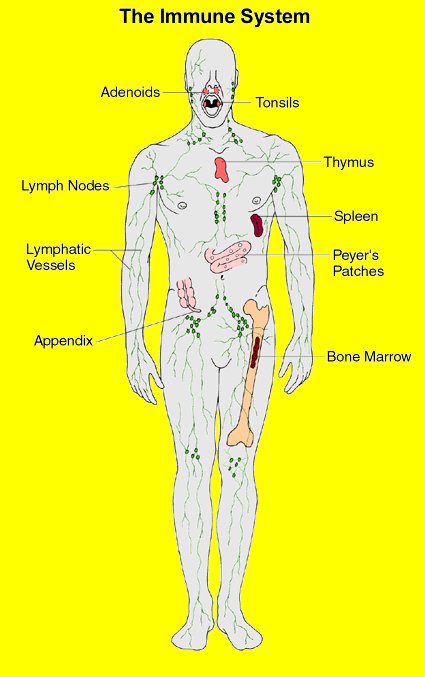
|
Some
of the informations on this link were taken from: (healthcare.utah.edu/.../Infectious/immune.htm)
and (www.herbdoc.com) and (www.humanillnesses.com/.../Body-Defenses.html)
and (foodmathers.tv)
But,
the first thing Pharmaceutical Society dose is to cut these parts out
of our body.! They cut off the only organs that keeps us from getting
sick, ever since from childhood ....! As if to say that, Allah's
creation was not complete and we know better than Allah,
and your body does not need these parts...! Can you imagine the expansion
of this crime!? Allah
created us in the best design.
The way
Allah
created
our
organs is that they repair themselves and repeat themselves after few
weeks or few months. For example, red blood cells live for
4 months and then die and new blood cells recreates.

10:34 -
Say, does any of your partners for Allah
initiate creation then repeat it? Say, Allah
initiates the creation then repeats it. How can you then deviate?

10:4 - To
Him is your final destiny, all of you, Allah’s promise in the truth.
Indeed He initiates the creation then repeats it
in order to reward those who have believed and led a righteous life justly.
As for those who have disbelieved, awaiting them is hellish drink and
a painful punishment, because of their continuous disbelief.

27:64 -
Who is the One who initiates then repeats it?
And who is the One who provides for you from the
sky and the land? Is there any other elah with Allah?
Say; present your proof if you are truthful.

29:19 -
Do they not see how Allah
initiates creation then repeats it? Indeed
this is easy for Allah.
We are hypnotized by satan,
let us test ourselves. If you want to buy an orange and you find a label
on it that says, "This orange will give you nausea, stomach ache, dizziness,
vomiting, and cause birth defect, or it may killyou, would you buy that
orange? No you would NOT! But, why is it that we pick up a medicine over
the counter and the label says, you may experience, nausea, stomach ache,
dizziness, vomiting, and cause birth defect, and might kill you, then
we even pay for it to get all these diseases, just because it says on
it "Relief headaches" ?!.....
Allah new satan will mislead
people through pharmaceutical companies in order to Change Allah's Creations,
that is why we have these verses 4:118-119 in the Quran. Allah has cursed
him (statan) and, he said, I have indeed possessed a definite share
of your servants. And, I will mislead them and
will tempt them and command them to Mark the Ears of Animals
and to Change Allah's
Creation. Again whoever takes satan as an ally besides Allah
then he has suffered a clear loss.

4:118
- Allah
has cursed him and he says I have indeed possessed a definite share of
your servants. 4:119
- And, I will mislead
them and will tempt them and command them to mark
the ears of animals and to change Allah’s
creation. Again whoever takes satan as an
ally besides Allah
then he has suffered a clear loss. 4:120
- He promises them and tempts them. However,
Satan does not promise them but an illusion.
|
| |
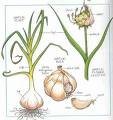



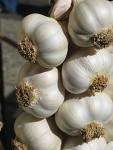

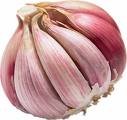

|
Garlic:
Allium sativum L., commonly
known as garlic, is a species in the onion family Alliaceae. Its close
relatives include the onion, the shallot, and the leek. Garlic has been
used throughout recorded history for both culinary and medicinal purposes.
It has a characteristic pungent, spicy flavor that mellows and sweetens
considerably with cooking. A bulb of garlic, the most commonly used part
of the plant, is divided into numerous fleshy sections called cloves.
The cloves are used as seed, for consumption (raw or cooked), and for
medicinal purposes. The leaves, stems (scape) and flowers (bulbils) on
the head (spathe) are also edible and most often consumed while immature
and still tender. The papery, protective layers of 'skin' over various
parts of the plant and the roots attached to the bulb are the only parts
not considered palatable.
What does
it do?
Garlic is claimed to help prevent
heart disease including atherosclerosis, high cholesterol, high blood
pressure, and cancer. Animal studies, and some early investigational studies
in humans, have suggested possible cardiovascular benefits of garlic.
A Czech study found garlic supplementation reduced accumulation of cholesterol
on vascular walls of animals. Another study had similar results, with
garlic supplementation significantly reducing the plaque in the aortas
of cholesterol-fed rabbits. Another study showed that supplementation
with garlic extract inhibited vascular calcification in human patients
with high blood cholesterol. The known vasodilative effect of garlic is
possibly caused by catabolism of garlic-derived polysulfides to hydrogen
sulfide in red blood cells, a reaction that is dependent on reduced thiols
in or on the RBC membrane. Hydrogen sulfide is an endogenous cardioprotective
vascular cell signaling molecule. However, a NIH-funded randomized clinical
trial published in Archives of Internal Medicine in 2007 found that consumption
of garlic, in any form, did not reduce cholesterol levels in patients
with moderately high baseline levels. In 2007 a BBC news story reported
that Allium sativum may have beneficial properties, such as preventing
and fighting the common cold. This assertion has the backing of long tradition.
Traditional British herbalism used garlic for hoarseness and coughs, both
as a syrup and in a salve made of garlic and lard, which was rubbed on
the chest and back. The Cherokee also used it as an expectorant for coughs
and croup. Allium sativum has been found to reduce platelet aggregation
and hyperlipidemia. Garlic is also alleged to help regulate blood sugar
levels. Regular and prolonged use of therapeutic amounts of aged garlic
extracts lower blood homocysteine levels, and has shown to prevent some
complications of diabetes mellitus. People taking insulin should not consume
medicinal amounts of garlic without consulting a physician. Allium sativum
may also possess cancer-fighting properties due to the presence of allylic
sulfur compounds such as diallyl disulfide (DADs), believed to be an anticarcinogen.
In 1858, Louis Pasteur observed garlic's antibacterial activity, and it
was used as an antiseptic to prevent gangrene during World War I and World
War II. More recently it has been found from a clinical trial that a mouthwash
containing 2.5% fresh garlic shows good antimicrobial activity, although
the majority of the participants reported an unpleasant taste and halitosis.
In modern naturopathy, garlic is used as a treatment for intestinal worms
and other intestinal parasites, both orally and as an anal suppository.
Garlic cloves are used as a remedy for infections (especially chest problems),
digestive disorders, and fungal infections such as thrush.[citation needed]
Garlic has been reasonably successfully used in AIDS patients to treat
cryptosporidium in an uncontrolled study in China. It has also been used
by at least one AIDS patient to treat toxoplasmosis, another protozoal
disease. Garlic supplementation in rats along with a high protein diet
has been shown to boost testosterone levels. To maximise health benefits
from consuming cooked garlic, it has been suggested to allow crushed or
chopped garlic to rest for 15 minutes before use to allow enzyme reactions
to occur. However the primary compound of interest from this reaction,
allicin, is generally deactivated during cooking due to its instability,
and may be more beneficial consumed raw.
|
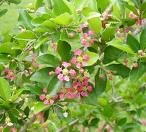

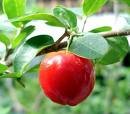
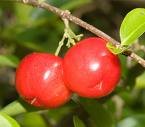

|
Acerola
Cherries:
(Malpighia punicifolia) The
fruit of the Acerola Cherry tree, is nature’s richest source of natural
Vitamin C. Acerola cherries also contain high levels of carotenoids which
in combination with vitamin C provide an excellent source of powerful
antioxidants. The nutrient profile is balanced by a rich array of proteins
and mineral salts principally, iron, calcium and phosphorus.
The fruit is edible and widely
consumed in the species' native area, and is cultivated elsewhere for
its high vitamin C content. In the 1950s, a manufacturer of baby food
decided that apple juice was milder for infants than orange juice. The
company claimed that a drop of acerola juice in an 8 oz. can of apple
juice provided the amount of vitamin C of an equal amount of orange juice.
A detailed nutrition facts analysis shows Acerola juice does contain 32
times the amount of vitamin C in orange juice (over 3000% as much) supporting
the claim. In Puerto Rico, the acerola is so prized that custom officials
exercise considerable precaution to prevent exporting of acerola cuttings.
In July 2008, Absolut Vodka announced its second product in a limited-edition
series, Absolut Los Angeles, with acerola used as one of a combination
of four flavors for the spirit. Açai, pomegranate and blueberry are also
used. Acerola flavour is also used in Tic Tac dragées. Acerola
is often cultivated as an ornamental shrub, particularly in the southeastern
United States. Acerola is classified in the division Magnoliophyta , class
Magnoliopsida, order Polygalales, family Malpighiaceae.
What
does it do?
It promotes the production
and release by your adrenal glands of cortsone, dopamine and norepinepharine,
which all work to help your body cope with stress and also keeps your
entire central nervouse system balance. It also helps your body and liver
to detoxify alcohil and other toxic substances. A Vitamin-C deficiency
will lead to a depleted immune system leaving you open to sickness and
infection. It will also slow the healing process of wounds. Also is needed
for the production of collagen, the "glue" that strengthens
the body's muscles and blood vessels. Also act as an antioxidant, scavenging
potentially harmful molecules called free radicals, and helps boost immune
function, protecting against cancer, cataracts, age-related macular degeneration
of the retina and other chronic disease. The chemical cartinine is dependent
on Vitamin-C also to help it move sugars into your cells to create Energy.
It also lower blood pressure.
|
|



|
Palm
Fruit:
Palm fruit is one of the richest
source of Vitamin-E, and contains more Vitamin-E than any other vegitable
oil known. Plam friut oil assimilates easily and is proven to dramtically
increase blood level of Vitamin-E. It is also exceptionally high in carotenoids,
like alpha and beta-carotene, having about 15 times that of carrots. It
also contains about 50 times the lycopene of tomatoes.
What
does it do?
The biggest prevention potential
of Vitamin-E, which is in Palm fruit is due to its antioxidant activity.
Antioxodants do everything in your body from preventing cancer and heart
disease to boosting your immune system and slowing the aging process.
They do this by providing a layer of protection from the cells and tissues
of the bodd.
|
|

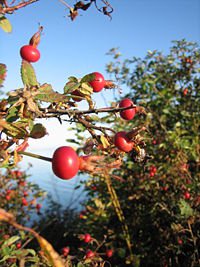


|
Rose
hips:
These are not only a great
source of Vitamin-C, but they also contain the extremely important Vitamin-C
Complex nutrients like biofliavonoids, hesperidin, rutin, epicatechin,
quercetin, luteolin, calcium and all the many Vitamin-C complex nutrient
that are necessary for your body to assimilate and utilize Vitamin-C.
This Vitamin-C complex blend is also a very high source of pectin, which
removes heavy metals (mercury, lead, etc) from the body. It even removes
radioactive and heavy metal contamination, like Strontium 90.
Wht
does it do?
It promotes the production
and release by your adrenal glands of cortsone, dopamine and norepinepharine,
which all work to help your body cope with stress and also keeps your
entire central nervouse system balance. It also helps your body and liver
to detoxify alcohil and other toxic substances. A Vitamin-C deficiency
will lead to a depleted immune system leaving you open to sickness and
infection. It will also slow the healing process of wounds. Also is needed
for the production of collagen, the "glue" that strengthens
the body's muscles and blood vessels. Also act as an antioxidant, scavenging
potentially harmful molecules called free radicals, and helps boost immune
function, protecting against cancer, cataracts, age-related macular degeneration
of the retina and other chronic disease. The chemical cartinine is dependent
on Vitamin-C also to help it move sugars into your cells to create Energy.
It also lower blood pressure.
|
|

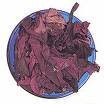

|
Purple
Dulse Seaweed:
The most mineral-rich plant
that grows in the earth's liquid soil. All the minerals and trace minerals
that exist on this planet are contained in the earth's crust. The ocean
then lies over this crust on three-quarters of this planet. Ocean water
could be called liquid soil. Purple Dulse sea vegetable grows in the ocean's
water, which has every mineral known to exit in it, in solution . This
sea vegetable is one of the richest sources of digestible, assimilable
and usable minerals on the planet. Purple Dulse is a rich source of calcium,
iodine, iron, magnesium, potassium.
What
does it do?
During their unique growth
process, aquatic plants absorb mineral-rich seawater and convert it into
bio-available natural, organuc minerals. This process is referred to as
biological transmutation. these newly created minerals become part of
the plant's cell structure and can now be assimilated and used by your
body. Purple Dulse contains calcium, which buils and maintains healty
bones and teeth as well as helps with blood clothing, heart beat regulation
and the release of neurotransmitters. Next is potassium and sodium, which
controls blood pressure as well as the pressure of every other fluid in
your body. Next is magnesium, which it's role is in evergy production
in your most vital organs such as the heart, kidney, liver and brain.
Phosphorus combines with calcium in bones to give them their hardness
and is also required for proper metabolism, which turns food into evergy.
Next is iron, which is found at the center of hemoglobin (the molecule
responsib;e for transporting oxygen to your cell). Iodine regulates how
proteins, fats and carbohydrates are used and energy is created in our
cells. Manganese is a an essential mineral involved in many enzyme systems,
which control blood sugar, use of energy and the production of thyriod
hormones. Next, Copper is crucial in the formation of the brain and the
nervous system and also assists in the creation of
|
|


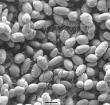
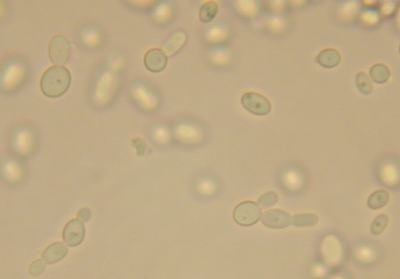
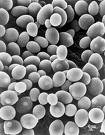
|
Saccharomyces
Cerevisiae:
Sometime between 10,000 and
15,000 years ago, a Mesopotamian farmer discovered that the water some
grain had been soaking in had developed a funny taste. He woke the next
day having made two important discoveries: Beer Hangovers The first written
records of brewing come from Sumeria about 6,000 years ago. But all that
drinking was making people hungry, so in Egypt around 5,000 years ago,
they starting making bread (or at least, wrote down the recipe). Before
that, bread was tough, dry stuff that tended to break your teeth and made
your jaw ache. Bread made with yeast was wonderful, light, tasty stuff.
The secret?
Yeasts such as Saccharomyces
cerevisiae are single-celled fungi which that multiply by budding, or
in some cases by division (fission), although some yeasts such as Candida
albicans may grow as simple irregular filaments (mycelium). They may also
reproduce sexually, forming asci which contain up to eight haploid ascospores.
If you look closely at the video, you can see examples of budding cells.
Saccharomyces cerevisiae has thick-walled, oval cells, around 10 µm long
by 5 µm wide.
What does
it do?
Saccharomyces cerevisiae is
one of the most important fungi in the history of the world. This yeast
is responsible for the production of ethanol in alcoholic drinks and is
the reasons your mother’s bread dough rises in the pan. That is where
the names brewer’s and baker’s yeast come from. The process in which it
produces ethanol is one way this yeast converts glucose into energy. There
are two ways Saccharomyces cerevisiae breaks down glucose. One way is
through aerobic respiration. This process requires the presence of oxygen.
When oxygen is not present the yeast will then go through anaerobic fermentation.
The net result of this is two ATP, and it also produces two by products;
carbon dioxide and ethanol. So if this yeast is allowed to grow in a container
lacking oxygen it will produce ethanol (alcohol). Humans have been isolating
this process since the beginning of history. The yeast helps in the rising
of bread with it’s other by-product carbon dioxide. The gas that is produce
inside the dough causes it to rise and expand. Both of these processes
use the haploid of this yeast for this process. In industry they isolate
one strain, either a or ?, of the haploid to keep them from undergoing
mating. (Madigan, 457) In the baker’s yeast they have a strain were the
production of carbon dioxide is more prevalent then ethanol and vice versa
for brewing. (Tomvolkfungi.net) Another importance is that “live yeast
supplementation to early lactating dairy goats significantly increased
milk production”.
|
|

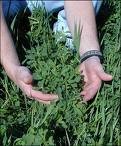

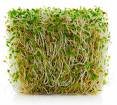
|
Alfalfa:
Alfalfa
is a cool season perennial legume living from three to twelve years, depending
on variety and climate. It resembles clover with clusters of small purple
flowers. The plant grows to a height of up to 1 metre, and has a deep
root system sometimes stretching to 4.5 metres. This makes it very resilient,
especially to droughts. It has a tetraploid genome. The plant exhibits
autotoxicity, which means that it is difficult for alfalfa seed to grow
in existing stands of alfalfa. Therefore, it is recommended that alfalfa
fields be rotated with other species (e.g. corn, wheat) before reseeding.
Like other legumes, its root nodules contain bacteria, Sinorhizobium meliloti,
with the ability to fix nitrogen, producing a high-protein feed regardless
of available nitrogen in the soil. Its nitrogen-fixing abilities (which
increases soil nitrogen) and use as animal feed greatly improved agricultural
efficiency. It is widely grown throughout the world as forage for cattle,
and is most often harvested as hay, but can be made into silage, grazed,
or fed as greenchop.
What does
it do?
Alfalfa
has the highest feeding value of all common hay crops, being used less
frequently as pasture. When grown on soils where it is well-adapted, alfalfa
is the highest yielding forage plant. Alfalfa has been used as an herbal
medicine for over 1,500 years. Alfalfa is high in protein, calcium, plus
other minerals, vitamin A, vitamins in the B group, vitamin C, vitamin
D, vitamin E, and vitamin K. In early Chinese medicines, physicans used
young alfalfa leafs to treat disorders related to the digestive tract
and the kidneys. In India, ayurvedic physicans used the leaves for treating
poor digestion. They made a cooling poultice from the seeds for boils.
At the time, alfalfa was also believed to be helpful towards people suffering
from arthritis and water retention. It is majorly used in homeopathic
medicines worldwide. Today, alfalfa is suggested for treating anemia,
diabetes, to extend appetite and contribute towards weight gain, as a
diuretic for increased urination, for indigestion and bladder disorders,
alfalfa can also be used as an estrogen replacement in order to increase
breast milk and to mitigate premenstrual syndrome, a dietary supplement,
and to lower blood cholestrol levels.
|
|



|
Wheat
Grass:
refers to the young grass of
the common wheat plant, Triticum aestivum, that is freshly juiced or dried
into powder for animal and human consumption. Both provide chlorophyll,
amino acids, minerals, vitamins, and enzymes. Claims about wheatgrass'
health benefits range from providing supplemental nutrition to having
unique curative properties. Some consumers grow and juice wheatgrass in
their homes. It is often available in juice bars, alone or in mixed fruit
and/or vegetable drinks. It is also available in many health food stores
as fresh produce, tablets, frozen juice and powder. One of the most popular
claims about wheatgrass, and one that is frequently made by both supporters
and retailers, is that 1 ounce of wheatgrass juice is as nutritionally
valuable as 1 kg (2.2 lb) of green vegetables, a ratio of 1:35. The available
vitamin and mineral data of wheatgrass juice, broccoli and spinach does
not support this claim (see table 1). In fact, the vitamin and mineral
content of 1 ounce of wheatgrass juice is roughly equivalent to the vitamin
and mineral content of 1 ounce of fresh vegetables. This conclusion does
not include phyto-nutrient comparisons of these foods.
What
dose it do?
Proponents
of wheatgrass claim regular ingestion of the plant can improve the digestive
system prevent cancer, diabetes and heart disease cure constipation detoxify
heavy metals from the bloodstream cleanse the liver prevent hair loss
help make menopause more manageable promote general wellbeing. Another
common claim for wheatgrass is that it promotes detoxification. There
appears to be limited data in support of that claim. As the chlorophyll
molecule is structurally similar to hemoglobin, it has been argued that
wheatgrass helps blood flow, digestion and general detoxification of the
body. Although no research exists that directly connects chlorophyll with
blood building, nutrients such as iron that are associated with dark green
leafy vegetables have been shown to be important for healthy blood.As
the chlorophyll molecule is structurally similar to hemoglobin, it has
been argued that wheatgrass helps blood flow, digestion and general detoxification
of the body. Although no research exists that directly connects chlorophyll
with blood building, nutrients such as iron that are associated with dark
green leafy vegetables have been shown to be important for healthy blood.
|
|

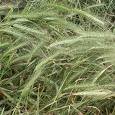

|
Barley
Grass:
Barley (Hordeum vulgare) is
an annual cereal grain, which serves as a major animal feed crop, with
smaller amounts used for malting and in health food. It is a member of
the grass family Poaceae. In 2005, barley ranked fourth in quantity produced
and in area of cultivation of cereal crops in the world (560,000 km²).
(H. vulgare) is descended from wild barley (Hordeum spontaneum). Both
forms are diploid (2n=14 chromosomes). As wild barley is interfertile
with domesticated barley, the two forms are often treated as one species,
Hordeum vulgare, divided into subspecies spontaneum (wild) and subspecies
vulgare (domesticated). The main difference between the two forms is the
brittle rachis of the former, which enables seed dispersal in the wild.
What
dose it do?
Wish
you were more regular? Let barley give your intestinal health a boost.
In addition to providing bulk and decreasing the transit time of fecal
matter, thus decreasing the risk of colon cancer and hemorrhoids, barley's
dietary fiber also provides food for the "friendly" bacteria in the large
intestine. When these helpful bacteria ferment barley's insoluble fiber,
they produce a short-chain fatty acid called butyric acid, which serves
as the primary fuel for the cells of the large intestine and helps maintain
a healthy colon. These helpful bacteria also create two other short-chain
fatty acids, propionic and acetic acid, which are used as fuel by the
cells of the liver and muscles. In addition, barley's dietary fiber is
high in beta glucan, which helps to lower cholesterol by binding to bile
acids and removing them from the body via the feces. Bile acids are compounds
used to digest fat that are manufactured by the liver from cholesterol.
When they are excreted along with barley's fiber, the liver must manufacture
new bile acids and uses up more cholesterol, thus lowering the amount
of cholesterol in circulation. Soluble fiber may also reduce the amount
of cholesterol manufactured by the liver. A study published in the American
Journal of Clinical Nutrition suggests barley's fiber has multiple beneficial
effects on cholesterol. In this study of 25 individuals with high cholesterol
(postmenopausal women, premenopausal women, and men), adding barley to
the American Heart Association Step 1 diet resulted in a significant lowering
in total cholesterol in all subjects, plus their amount of large LDL and
large and intermediate HDL fractions (which are considered less atherogenic)
increased, and the smaller LDL and VLDL cholesterol (the most dangerous
fractions) greatly decreased. Lastly, when barley provides insoluble fibers
that feed friendly bacteria in the digestive tract, this helps to maintain
larger populations of friendly bacteria. In addition to producing the
helpful short-chain fatty acids described above, friendly bacteria play
an important protective role by crowding out pathogenic (disease-causing)
bacteria and preventing them from surviving in the intestinal tract. Yet
another reason to increase your intake of barley is that, in addition
to its fiber, barley is also a good source of niacin, a B vitamin that
provides numerous protective actions against cardiovascular risk factors.
Niacin can help reduce total cholesterol and lipoprotein (a) levels. Eating
a serving of whole grains, such as barley, at least 6 times each week
is a good idea, especially for postmenopausal women with high cholesterol,
high blood pressure or other signs of cardiovascular disease (CVD).
|
|
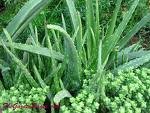
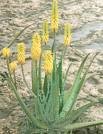
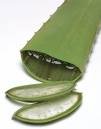
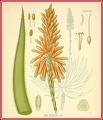
|
Curacao
and Cape Aloe Leaf:
Since the era of Ancient Egypt,
humans have been using aloe. Cleopatra was said to have used aloe as a
beauty tool. The Egyptians discovered the healing powers of aloe. They
used it as one of the ingredients of embalming fluid. In the 10th Century,
the Europeans were introduced, where it became an important ingredient
in many herbal medicines. By the 16th Century, aloe arrived in the West
Indies, where still today it is grown and harvested. Many species of Aloe
are seemingly stemless, with the rosette growing directly at ground level;
other varieties may have a branched or un-branched stem from which the
fleshy leaves spring. They vary in disecis from grey to bright green and
are sometimes striped or grasped.
What
does it do?
Some
species, in particular Aloe vera are used in alternative medicines and
in home first aid. Both the translucent inner pulp and the resinous yellow
exudate from wounding the Aloe plant are used externally to relieve skin
discomforts. Systematic reviews of randomised and controlled clinical
trials have provided no evidence that Aloe vera has any medical effect.
Other research suggests Aloe vera can negatively affect healing. Today,
the gel found in the leaves is used for soothing minor burns, wounds,
and various skin conditions like eczema and ringworm. The use of this
herbal medicine was popularized in the 1950's in many Western Countries.
The gel's effect is nearly immediate, plus it also applies a layer over
wounds that is said to reduce the chance of any infection. There have
been very few properly conducted studies about possible benefits of aloe
gel taken internally, since the Aloe extract is toxic and carcinogenic.
There have been some studies in animal models which indicate that extracts
of Aloe have a significant anti-hyperglycemic effect, and may be useful
in treating Type II diabetes. These studies have not been confirmed in
humans. On May 9, 2002, the U.S. Food and Drug Administration issued a
final rule banning the use of aloe and cascara sagrada as laxative ingredients
in over-the-counter drug products.
|
|
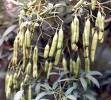
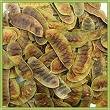


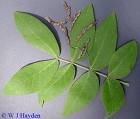
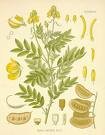
|
Senna
Pods:
Senna species make good ornamental
plants and are used for landscape gardening. The wide variety of species
and ecological adaptations makes at least a handful of sennas suitable
for any climate warmer than cool-temperate. Cassia gum - a commonly-used
thickening agent -, despite its name is actually from Chinese Senna (S.
obtusifolia) seeds. In some Southeast Asian cuisines (particularly those
of Thailand and Laos), the leaves and flowers of Siamese Senna (S. siamea,
called khi-lek in Thai), either fresh or pickled in brine, are used in
cooking, particularly in gaeng khi-lek (khi-lek curry). Another senna,
Senna italica ssp. italica (= Cassia obovata), often called "neutral henna",
is used as a hair treatment with effects similar to henna but without
the red color. The active component is an anthraquinone derivative called
chrysophanic acid, which is also found in higher concentrations in rhubarb
root. It adds a slight yellow color.
What does
it do?
Sennas
have for millennia played a major role in herbalism and folk medicine.
Alexandrian Senna (S. alexandrina) was and still is a significant item
of trans-national trade e.g. by the Ababdeh people and grown commercially,
traditionally along the middle Nile but more generally in many regions
around the northwestern Indian Ocean. Sennas act as purgatives and are
similar to aloe and rhubarb in having as active ingredients anthraquinone
derivatives and their glucosides. the latter ale called sennosides or
senna glycosides. Senna acts on the lower bowel, and is especially useful
in alleviating constipation. It increases the peristaltic movements of
the colon. The plants are most often prepared as an infusion. Senna glycosides
are listed as ATC code A06AB06 on their own and A06AB56 in combined preparations.
Today, because of the presence of ample anthraquinones, sennas are still
used as the primary ingredient in certain commercial stimulant laxatives.
Senna is also the primary ingredient found in most "dieter's teas". The
combination of acting as a stimulant which reduces a dieter's appetite,
and the laxative properties that cause food to move through their system
before as many calories can be absorbed is a combination that can lead
to rapid and even dangerous weight loss. The stimulant action of sennosides
should be taken into account for those who suffer from any conditions
where stimulants are contraindicated, such as past heart disease, high
blood pressure, anxiety attacks, etc. A (generally invisible and harmless)
side effect of taking Senna medication regularly is Melanosis coli, a
brown discoloration of the colon wall.
|
|




|
Cascara
Sagrada:
It is the largest species of
buckthorn, occasionally growing up to 15 m tall, though more commonly
a large shrub or small tree 5-10 m tall, with a trunk 20-50 cm in diameter.
The bark is brownish to silver-grey with light splotching. The leaves
are deciduous, alternate, clustered near the ends of twigs; they are oval,
5-15 cm long and 2-5 cm broad with a 0.6-2 cm petiole, dark shiny green
on top, fuzzy and paler green below. The flowers are tiny, 4-5 mm diameter,
with five greenish yellow petals; the flowering season is brief, disappearing
by early summer. The fruit is a berry 6-10 mm diameter, bright red at
first, quickly maturing deep purple or black, and containing three seeds.
What does
it do?
The dried,
aged bark of this tree has been used continually for at least 1,000 years
by both native and immigrant Americans as a laxative natural medicine,
commercially called "Cascara Sagrada", but old timers call it "chitticum
bark". Cascara Sagrada means "sacred bark" in Spanish. The much more pertinent
name chitticum means "shit come" in Chinook Jargon; chittam comes from
the Chinook Jargon phrase chittam stick = "laxative tree" which is similarly
from the English word "shit". Long used as a laxative by Native American
groups of the northwest Pacific coast, chitticum bark or Cascara Sagrada
was accepted in medical practice in the United States in 1877, and by
1890 had replaced the berries of the European Buckthorn (R. catharticus)
as a commonly used laxative. It has been the principal ingredient in many
commercial, over-the-counter laxatives in North American pharmacies. On
May 9, 2002, the U.S. Food and Drug Administration issued a final rule
banning the use of aloe and cascara sagrada as laxative ingredients in
over-the-counter drug products[2]. The bark is harvested mostly from wild
trees; over-harvesting in the middle 1900s eliminated mature trees near
many settled areas. Once stripped from the tree, the bark is aged for
about 1 year to make its effect milder. Fresh cut, dried bark causes vomiting
and violent diarrhea.
|
|


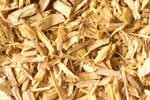
|
Oregon
Grape root:
Oregon-grape
(Mahonia aquifolium, Berberidaceae) is an evergreen shrub related to the
barberry. Some authors submerge Mahonia in the barberry genus, Berberis.
The plant is in no way related to grapes, but gets the name from the purple
clusters of berries. It is sometimes called Tall Oregon-grape to distinguish
it from Creeping Oregon-grape (Mahonia repens) and "Cascade" or Dwarf
Oregon-grape (M. nervosa). The name is often left un-hyphenated as Oregon
grape, though doing so invites confusion with the true grapes. It also
occasionally appears in print as Oregongrape. FlowersOregon-grape grows
to 1-5 m tall. Its leathery leaves resemble holly and the stems and twigs
have a thickened, corky appearance. The flowers, borne in late spring,
are an attractive yellow.
What
does it do?
The plant
is used medicinally by herbalists. Recent studies indicate that M. aquifolium
contains a specific multidrug resistance pump inhibitor (MDR Inhibitor)
named 5'methoxyhydnocarpin (5'MHC) which works to decrease bacterial resistance
to antibiotics and antibacterial agents. Oregon grape root is commonly
used medicinally as an effective alternative to the threatened goldenseal.
Both plants similarly contain the alkaloid berberine, known as an anti-inflammatory
and anti-bacterial used in the treatment of infection. Berberine and other
alkaloids present in Oregon grape root have been shown to kill a wide
range of microbes and have been effective in speeding recovery from giardia,
candida, viral diarrhea, and cholera.[citation needed] Mahonia aquifolium
is also known to be capable of treatment on inflammatory skin diseases
such as Eczema and Psoriasis.Oregon grape root also has anticancer properties
that are receiving more attention by researchers.[citation needed] Other
actions may include alterative, diuretic, laxative and tonic. Health Warning:
Because of a potential toxicity or adverse effects of berberine, consult
a reputable herbalist regarding dosages and treatments. Use of berberine
is not recommended during pregnancy or breastfeeding.
|
|





|
Spirulina
Algae:
Spirulina is the common name
for human and animal food supplements produced primarily from two species
of cyanobacteria (also known as blue-green algae): Arthrospira platensis,
and Arthrospira maxima. These and other Arthrospira species were once
classified in the genus Spirulina. There is now agreement that they are
distinct genera, and that the food species belong to Arthrospira; nonetheless,
the older term "Spirulina" remains the popular name. Spirulina is cultivated
around the world, and is used as a human dietary supplement as well as
a whole food and is available in tablet, flake, and powder form. It is
also used as a feed supplement in the aquaculture, aquarium, and poultry
industries.
What
does it do?
Spirulina contains unusually
high amounts of protein, between 55 and 77% by dry weight, depending upon
the source. It is a complete protein, containing all essential amino acids,
though with reduced amounts of methionine, cysteine, and lysine, as compared
to standard proteins such as that from meat, eggs, or milk. It is, however,
superior to all standard plant protein, such as that from legumes.Spirulina
is rich in gamma-linolenic acid (GLA), and also provides alpha-linolenic
acid (ALA), linoleic acid (LA), stearidonic acid (SDA), eicosapentaenoic
acid (EPA), docosahexaenoic acid (DHA), and arachidonic acid (AA). Spirulina
contains vitamin B1 (thiamine), B2 (riboflavin), B3 (nicotinamide), B6
(pyridoxine), B9 (folic acid), B12 (cyanocobalamin), vitamin C, vitamin
D, and vitamin E. The bioavailability of vitamin B12 in Spirulina is in
dispute. Several biological assays have been used to test for the presence
of vitamin B12. Spirulina is a rich source of potassium, and also contains
calcium, chromium, copper, iron, magnesium, manganese, phosphorus, selenium,
sodium, and zinc. Many positive claims are based on research done on individual
nutrients that Spirulina contains, such as GLA, various antioxidants,
etc., rather than on direct research using Spirulina. Spirulina is effective
for the clinical improvement of melanosis and keratosis due to chronic
arsenic poisoning; improves weight-gain and corrects anemia in both HIV-infected
and HIV-negative undernourished children; and protects against hay fever.
A 2007 clinical trial found that 4.5 grams of spirulina per day for six
weeks: lowered total cholesterol, increased HDL cholesterol, lowered triglycerides;
and lowered both systolic and diastolic blood pressure.
|
|

|
Blue
-Green Algae:
Algae groups are a large and
diverse group of simple plant-like organisms, ranging from unicellular
to multicellular forms. The largest and most complex marine forms are
called seaweeds. They are considered "plant-like" because of their photosynthetic
ability, and "simple" because they lack the distinct organs of higher
plants such as leaves and vascular tissue. Though the prokaryotic Cyanobacteria
(commonly referred to as Blue-green algae) were traditionally included
as "algae" in older textbooks, many modern sources regard this as outdated
and restrict the term algae to eukaryotic organisms. Algae multiply very
rapidly. The two most common species of algae used for human consumption
are spirulina maxima and spirulina platensis.
?????Cyanobacteria, also known
as blue-green algae, blue-green bacteria or Cyanophyta, is a phylum of
bacteria that obtain their energy through photosynthesis. The name "cyanobacteria"
comes from the color of the bacteria (Greek: (kyanós) = blue). They are
a significant component of the marine nitrogen cycle and an important
primary producer in many areas of the ocean, but are also found on land.
Stromatolites of fossilized oxygen-producing cyanobacteria have been found
from 2.8 billion years ago. The ability of cyanobacteria to perform oxygenic
photosynthesis is thought to have converted the early reducing atmosphere
into an oxidizing one, which dramatically changed the life forms on Earth
and provoked an explosion of biodiversity. Chloroplasts in plants and
eukaryotic algae have evolved from cyanobacteria.
What
does it do?
People should be reassured
that both Spirulina (blue-green algae) and Chlorella (green algae) are
safe, nutritious and healthy. Their value is supported by thousands of
published scientific articles spanning 30 years. These microscopic algae
are consumed by millions of people in 40 countries around the world. Spirulina
and Chlorella are growing in popularity because people find them effective.
Studies have indicated several properties of large amounts of spirulina
or spirulina extracts including antioxidant, antiviral, anticancer, anti-allergy,
immune-enhancing, liver-protecting, blood vessel-relaxing, and blood lipid-lowering,
but there is no concrete scientific evidence that can substantiate these
indications. Some studies indicate that taking blue-green algae may have
a positive effect on both weight loss and high blood pressure. Blue-green
algae can be taken as a powder, flakes, capsules, or tablets. A manufacturer's
recommended intake is 2,000 - 3,000 mg per day divided throughout the
day. However, typical amounts shown to have helpful properties in animal
studies would be equivalent to 34 grams per day or more for a 150-pound
human.
|
|




|
Chlorella
Broken-Cell-Algae:
Chlorella is a genus of single-celled
green algae, belonging to the phylum Chlorophyta. It is spherical in shape,
about 2 to 10 µm in diameter, and is without flagella. Chlorella contains
the green photosynthetic pigments chlorophyll-a and -b in its chloroplast.
Through photosynthesis it multiplies rapidly requiring only carbon dioxide,
water, sunlight, and a small amount of minerals to reproduce. The name
Chlorella is taken from the Greek word chloros meaning green and the Latin
diminutive suffix ella meaning "small." German biochemist Otto Heinrich
Warburg received the Nobel Prize in Physiology or Medicine in 1931 for
his study on photosynthesis in Chlorella. In 1961 Melvin Calvin of the
University of California received the Nobel Prize in Chemistry for his
research on the pathways of carbon dioxide assimilation in plants using
Chlorella. In recent years, researchers have made less use of Chlorella
as an experimental organism because it lacks a sexual cycle and, therefore,
the research advantages of genetics are unavailable.
What
does it do?
Many people believed Chlorella
could serve as a potential source of food and energy because its photosynthetic
efficiency can, in theory, reach 8%, comparable with other highly efficient
crops such as sugar cane. It is also an attractive food source because
it is high in protein and other essential nutrients; when dried, it is
about 45% protein, 20% fat, 20% carbohydrate, 5% fiber, and 10% minerals
and vitamins. However, because it is a single-celled algae, harvest posed
practical difficulties for its large-scale use as a food source. Mass-production
methods are now being used to cultivate it in large artificial circular
ponds. It was believed in the early 1940s that, unlike most plants, Chlorella
protein was “complete,” for it had the ten amino acids then considered
essential, and it was also packed with calories, fat, and vitamins. Chlorella
has been found to have anti-tumor properties when fed to mice. Another
study found enhanced vascular function in hypertensive rats given oral
doses of chlorella. Although at its onset Chlorella was thought to add
a "dirt-cheap" form of high protein to the human diet, studies proved
otherwise. Chlorella, which actually loses most of its nutritional value
when altered or processed in any way, was no longer an effective protein,
and, therefore, pro-Chlorella supporters decided to communicate other
health benefits of the algae. Hence, weight control, cancer prevention,
and immune system support are all positive health benefits attributed
to this algae. However, clinical studies demonstrate healing effects of
chlorella, including dioxin detoxification in humans and animals, healing
from radiation exposure in animals and the ability to reduce high blood
pressure, lower serum cholesterol levels, accelerate wound healing, and
enhance immune functions in humans.
|
|


|
Purple
Dulse Seaweed:
Dulse grows attached by its
discoid holdfast to the stipes of Laminaria or to rocks. It has a short
stipe, the fronds are variable and vary in colour from deep-rose to reddish-purple
and are rather leathery in texture. The flat foliose blade gradually expands
and divides into broad segments ranging in size to 50 cm long and 30 -
8 cm in width which can bear flat wedge-shaped proliferations from the
edge.
What does
it do?
Dulse is a good source of minerals
and vitamins compared with other vegetables and it contains all trace
elements needed for humans with a high protein content. Dulse can be found
in some dietary supplements, where it is often referred to as "Nova Scotia
Dulce", it is a good source of dietary requirements, a handful will provide
more than 100% of the daily amount of Vitamin B6, 66% of Vitamin B12,
a day's supply of iron and fluoride, and it is relatively low in sodium
and high in potassium.[13] Fresh dulse can be eaten directly off the rocks
before sun-drying. Sun-dried dulse is eaten as is or is ground to flakes
or a powder. In Iceland the tradition is to eat it with butter. It can
also be pan fried quickly into chips, baked in the oven covered with cheese,
with salsa, or simply microwaved briefly. It can also be used in soups,
chowders, sandwiches and salads, or added to bread/pizza dough. Finely
diced, it can also be used as a flavour enhancer in meat dishes, such
as chili, in place of monosodium glutamate.
|
|



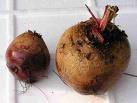
|
Beet
Root:
Beta vulgaris, commonly known
as beet or beetroot, is a flowering plant species in the family Chenopodiaceae.
Several cultivars are valued around the world as edible root vegetables,
fodder (mangel) and sugar-producing sugar beet. It is also common in Australia
and New Zealand for pickled beetroot to be consumed on a burger. Garden
beet juice is a popular health food. Betanins, obtained from the roots,
are used industrially as red food colourants, e.g. to improve the colour
of tomato paste, sauces, desserts, jams and jellies, ice cream, sweets
and breakfast cereals.
Whay
does it do?
The roots and leaves have medicinal
uses. The Romans used beetroot as a treatment for fevers and constipation,
amongst other ailments. Apicius in De re coquinaria gives five recipes
for soups to be given as a laxative, three of which feature the root of
beet. Hippocrates advocated the use of beet leaves as binding for wounds.
Since Roman times, beetroot juice has been considered an aphrodisiac.
It is a rich source of the mineral boron, which plays an important role
in the production of human sex hormones. Field Marshal Montgomery is reputed
to have exhorted his troops to 'take favours in the beetroot fields',
a euphemism for visiting prostitutes. From the Middle Ages, beetroot was
used as a treatment for a variety of conditions, especially illnesses
relating to digestion and the blood. Platina recommended taking beetroot
with garlic to nullify the effects of 'garlic-breath'. Today the beetroot
is still championed as a universal panacea. One of the most controversial
examples is the official position of the South African Health Minister
on the treatment of AIDS. Dr. Manto Tshabalala-Msimang, Health Minister
under Thabo Mbeki, has been nicknamed 'Dr. Beetroot' for promoting beets
and other vegetables over antiretroviral AIDS medicines, which she considers
toxic.
|
|
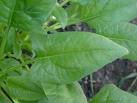
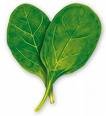

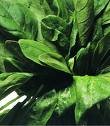
|
Spinich
Leaf:
Spinach (Spinacia oleracea)
is a flowering plant in the family of Amaranthaceae. It is native to central
and southwestern Asia. It is an annual plant (rarely biennial), which
grows to a height of up to 30 cm. Spinach may survive over winter in temperate
regions. The leaves are alternate, simple, ovate to triangular-based,
very variable in size from about 2-30 cm long and 1-15 cm broad, with
larger leaves at the base of the plant and small leaves higher on the
flowering stem. The flowers are inconspicuous, yellow-green, 3-4 mm diameter,
maturing into a small hard dry lumpy fruit cluster 5-10 mm across containing
several seeds.
What
does it do?
In popular folklore, spinach
is a rich source of iron. In reality, a 60 gram serving of boiled spinach
contains around 1.9 mg of iron (slightly more when eaten raw). Many green
vegetables contain less than 1 mg of iron for an equivalent serving. Hence
spinach does contain a relatively high level of iron for a vegetable,
but its consumption does not have special health connotations. Spinach
also has a high calcium content. However, the oxalate content in spinach
binds with calcium decreasing its absorption. By way of comparison, the
body can absorb about half of the calcium present in broccoli, yet only
around 5% of the calcium in spinach. Oxalate is one of a number of factors
that can contribute to gout and kidney stones. Equally or more notable
factors contributing to calcium stones are: genetic tendency, high intake
of animal protein, excess calcium intake, excess vitamin D, prolonged
immobility, hyperparathyroidism, renal tubular acidosis, and excess dietary
fiber. Spinach still has a large nutritional value, especially when fresh,
steamed, or quickly boiled. It is a rich source of vitamin A, vitamin
C, vitamin E, vitamin K, magnesium, and several vital antioxidants. Recently,
opioid peptides called rubiscolins have also been found in spinach. It
is a source of folic acid (Vitamin B9), and this vitamin was first purified
from spinach. To benefit from the folate in spinach, it is better to steam
it than to boil it. Boiling spinach for four minutes can halve the level
of folate. When cooked, the volume of spinach is decreased by three quarters.
|
|


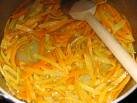
|
Orange and
Lemon Peels:
Phytonutrients, specifically,
the class of polyphenols, are high in citrus with oranges containing 84mg
Gallic Acid equivalents/100mg. The polyphenols so abundant in oranges
have been shown to have a wide range of antioxidant, anti-viral, anti-allergenic,
anti-inflammatory, anti-proliferative and anti-carcinogenic effects. Although
most of the research has centered on citrus polyphenols' possible role
in cancer and heart disease, more recently, scientists have begun to look
at their role in brain functions such as learning and memory.
The lemon (Citrus × limon)
is a hybrid in cultivated wild plants. It is the common name for the reproductive
tissue surrounding the seed of the angiosperm lemon tree. The lemon is
used for culinary and non culinary uses throughout the world.The fruit
is used primarily for its juice, though the pulp and rind (zest) are also
used, primarily in cooking and baking. Lemon juice is about 5% citric
acid, which gives lemons a tart taste, and a pH of 2 to 3. This makes
lemon juice an inexpensive, readily available acid for use in educational
science experiments.
What
doe it do?
In citrus fruits, limonin is
present in the form of limonin glucoside, in which limonin is attached
to a sugar (glucose) molecule. Our bodies easily digest this compound,
cleaving off the sugar and releasing limonin. A class of compounds found
in citrus fruit peels called polymethoxylated flavones (PMFs) have the
potential to lower cholesterol more effectively than some prescription
drugs, and without side effects, according to a study by U.S. and Canadian
researchers that was published in the Journal of Agricultural and Food
Chemistry. Lemons and other citrus fruits contain vitamins and minerals
that are beneficial to the health. A terpene called D-limonene produces
their characteristic lemon smell and taste. Lemons contain significant
amounts of citric acid; this is why they have a low pH and a sour taste.
They contain Vitamin C (Ascorbic acid) which is essential for human health.
100 milliliters of lemon juice contains approximately 50 milligrams of
Vitamin C (55% of the recommended daily value) and 5 grams of citric acid.
Some sources state that lemons contain unique flavonoid compounds that
have antioxidant and anti-cancer properties. These may be able to deter
cell growth in cancers. Limonins found in lemons could also be anti-carcinogens.
Because of its high Vitamin C content, lemon has been touted in alternative
medicine as a tonic for the digestive system, immune system, and skin.[citation
needed]There is a belief in Ayurvedic medicine that a cup of hot water
with lemon juice in it tonifies and purifies the liver.
|
| |
|
| |
Ginger root:
Ginger is the common name for
the monocotyledonous perennial plant Zingiber officinale. The term is
also used to describe the edible part of the plant which is commonly used
as a spice in cooking throughout the world. Often referred to as ginger
"root", the edible section is actually a rhizome. The ginger plant has
a long history of cultivation known[citation needed] to originate in China
and then spread to India, Southeast Asia, West Africa, and the Caribbean.
What does
it do?
The medical form of ginger
historically was called "Jamaica ginger"; it was classified as a stimulant
and carminative, and used frequently for dyspepsia and colic. It was also
frequently employed to disguise the taste of medicines. Ginger is on the
FDA's 'generally recognized as safe' list, though it does interact with
some medications, including warfarin. Ginger is contraindicated in people
suffering from gallstones as the herb promotes the release of bile from
the gallbladder. Ginger may also decrease joint pain from arthritis, though
studies on this have been inconsistent, and may have blood thinning and
cholesterol lowering properties that may make it useful for treating heart
disease. The characteristic odor and flavor of ginger root is caused by
a mixture of zingerone, shoagoles and gingerols, volatile oils that compose
about one to three percent of the weight of fresh ginger. In laboratory
animals, the gingerols increase the motility of the gastrointestinal tract
and have analgesic, sedative, antipyretic and antibacterial properties.
There are a variety of uses suggested for ginger. Tea brewed from ginger
is a folk remedy for colds. Ginger ale and ginger beer have been recommended
as "stomach settlers" for generations in countries where the beverages
are made and ginger water was commonly used to avoid heat cramps in the
US. Ginger has also been historically used to treat inflammation which
several scientific studies support, though one arthritis trial showed
ginger to be no better than a placebo or ibuprofen. Research on rats suggests
that ginger may be useful for treating diabetes.
|
| |
Habanero
Peppers:
The habanero chile is one of
the the most intensely spicy species of chili peppers of the Capsicum
genus. Unripe habaneros are green, but the color at maturity varies. Common
colors are orange and red, but white, brown, and pink are also seen. Typically
a ripe habanero is 2–6 centimeters (1–2½ in) long. " Habanero ", taken
from the Port of Havana, where many traders bought their spices, was adopted
as a way of making a clear distinction between similarly named spices.
Black Habenero's can often have a Scoville rating of 800,000 units to
as much as 1,000,000 Scoville units, making them a serious rival for other
claimants to the title of, " The World's hottest Chilli ".
What
does it do?
|
|
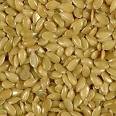

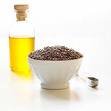
|
Flax
Seed:
Flax seeds come in two basic
varieties, brown and yellow or golden, with most types having similar
nutritional values and equal amounts of short-chain omega-3 fatty acids.
The exception is a type of yellow flax called Linola or solin, which has
a completely different oil profile and is very low in omega-3. Although
brown flax can be consumed as readily as yellow, and has been for thousands
of years, it is better known as an ingredient in paints, fibre and cattle
feed. Flax seeds produce a vegetable oil known as flaxseed or linseed
oil; it is one of the oldest commercial oils and solvent-processed flax
seed oil has been used for centuries as a drying oil in painting and varnishing
What does
it do?
Flax seeds contain high levels
of lignans and Omega-3 fatty acids. Lignans may benefit the heart, possess
anti-cancer properties and studies performed on mice found reduced growth
in specific types of tumours. Initial studies suggest that flaxseed taken
in the diet may benefit individuals with certain types of breast and prostate
cancers. Flax may also lessen the severity of diabetes by stabilizing
blood-sugar levels. There is some support for the use of flax seed as
a laxative due to its dietary fiber content though excessive consumption
without liquid can result in intestinal blockage. Consuming large amounts
of flax seed can impair the effectiveness of certain oral medications,
due to its fiber content. Raw flax seed contains the chemical hydrogen
cyanide (HCN) or cyanogenic glucosides which can be toxic if consumed
in large quantities.
|
|

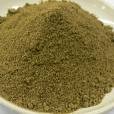

|
Bentonite
Clay:
Bentonite is an absorbent aluminium
phyllosilicate generally impure clay consisting mostly of montmorillonite.
There are a few types of bentonites and their names depend on the dominant
elements, such as K, Na, Ca, and Al. As noted in several places in the
geologic literature, there are some nomenclatorial problems with the classification
of bentonite clays. Bentonite usually forms from weathering of volcanic
ash, most often in the presence of water. However, the term bentonite,
as well as a similar clay called tonstein, have been used for clay beds
of uncertain origin. For industrial purposes, two main classes of bentonite
exist: sodium and calcium bentonite. In stratigraphy and tephrochronology,
completely devitrified (weathered volcanic glass) ash-fall beds are commonly
referred to as K-bentonites when the dominant clay species is illite.
Other common clay species, and sometimes dominant, are montmorillinite
and kaolinite. Kaolinite dominated clays are commonly referred to as tonsteins
and are typically associated with coal.
What does
it do?
Sodium bentonite expands when
wet, possibly absorbing several times its dry mass in water. Because of
its excellent colloidal properties (see Odom ref below) it is often used
in drilling mud for oil and gas wells and for geotechnical and environmental
investigations. The property of swelling also makes sodium bentonite useful
as a sealant, especially for the sealing of subsurface disposal systems
for spent nuclear fuel and for quarantining metal pollutants of groundwater.
Similar uses include making slurry walls, waterproofing of below-grade
walls and forming other impermeable barriers: e.g., to seal off the annulus
of a water well, to plug old wells, or as a liner in the base of landfills
to prevent migration of leachate.
|
|



|
Apple Pectin:
Pectin, a white to light brown
powder, is a heteropolysaccharide derived from the cell wall of higher
terrestrial plants. It was first isolated and described in 1825 by Henri
Braconnot. It is mainly used in food as a gelling agent in jams and jellies.
Today it is also used in fillings, sweets, as a stabilizer in fruit juices
and milk drinks and as a source of dietary fiber in foods.
What does
it do?
In medicine, pectin increases
viscosity and volume of stool so that it is used against constipation
and diarrhea. Until 2002, it was one of the main ingredients used in Kaopectate,
along with kaolinite. Pectin is also used in throat lozenges as a demulcent.
In cosmetic products, pectin acts as stabilizer. Pectin is also used in
wound healing preparations and specialty medical adhesives, such as colostomy
devices. In ruminant nutrition, depending on the extent of signification
of the cell wall, pectin is up to 90% digestible by bacterial enzymes.
Ruminant nutritionists recommend that the digestibility and energy concentration
in forages can be improved by increasing pectin concentration in the forage.
|
|


|
Activated Willow Charcoal |
|
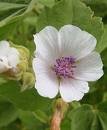
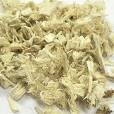


|
Marshmallow
root:
Althaea is a genus of 6-12
species of perennial herbs, including the marshmallow plant whence the
confection got its name, native to Europe and western Asia. They are found
on the banks of rivers and in salt marshes, preferring moist, sandy soils.
The stems grow to 1-2 m tall, and flower in mid summer. The leaves are
palmately lobed with 3-7 lobes. Althaea species are used as food plants
by the larvae of some Lepidoptera species including Bucculatrix quadrigemina.
The genus formerly included a number of additional species now treated
in the genus Alcea (Hollyhocks). The root contains starch (37%), mucilage
(11%), pectin (11%), flavonoids, phenolic acids, sucrose, and asparagine.
What
does it do?
In herbalism mallow is used
as a gargle to treat mouth and throat ulcers. It is also useful for gastric
ulcers. The flowers and young leaves can be eaten. They are often added
to salads or boiled and fried. They are also used in cosmetics for the
skin. The root has been used since Egyptian antiquity in a honey-sweetened
confection useful in the treatment of sore throat. The later French version
of the recipe, called pâte de guimauve, included an eggwhite meringue
and was often flavored with rose water. Pâte de guimauve more closely
resembles contemporary commercially available marshmallows, which ironically
no longer contain any actual marshmallow. The root's emulsifying property
is used for cleaning Persian carpets in the Middle East. It is regarded
as the best method to preserve the vibrancy of vegetable dyes used in
coloring the carpet's wool.
|
|




|
Psyllium
seed:
Psyllium or Ispaghula is the
common name used for several members of the plant genus Plantago whose
seeds are used commercially for the production of mucilage.
What
does it do?
The mucilage obtained from
psyllium comes from the seed coat. Mucilage is obtained by mechanical
milling/grinding of the outer layer of the seed. Mucilage yield amounts
to approximately 25% or more (by weight) of the total seed yield. Plantago-seed
mucilage is often referred to as husk, or psyllium husk. The milled seed
mucilage is a white fibrous material that is hydrophilic, meaning that
its molecular structure causes it to attract and bind to water. Upon absorbing
water, the clear, colorless, mucilaginous gel that forms increases in
volume by tenfold or more. Psyllium is mainly used as a dietary fiber,
which is not absorbed by the small intestine. The purely mechanical action
of psyllium mucilage absorbs excess water while stimulating normal bowel
elimination. Although its main use has been as a laxative, it is more
appropriately termed a true dietary fiber. As a thickener, it has been
used in ice cream and frozen desserts. A 1.5% weight/volume ratio of psyllium
mucilage exhibits binding properties that are superior to a 10% weight/volume
ratio of starch mucilage. The viscosity of psyllium mucilage dispersions
are relatively unaffected between temperatures of 68 to 122°F, by pH from
2 to 10 and by salt (sodium chloride) concentrations up to 0.15 M. These
physical properties, along with its status as a natural dietary fiber,
may lead to increased use of psyllium by the food-processing industry.
Technical-grade psyllium has been used as a hydrocolloidal agent to improve
water retention for newly-seeded grass areas, and to improve transplanting
success with woody plants.
|
|
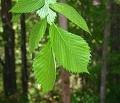


|
Slippery
Elm Bark:
The Slippery Elm is a deciduous
tree which reaches 10-20 m tall and has a 50 cm trunk diameter. The leaves
are 10-18 cm long and have rough texture, coarsely double-serrate margin
and an oblique base. The flowers are produced before the leaves in early
spring, usually in clusters of 10-20. The fruit is an oval winged samara
2 cm long and containing a single, central seed. Slippery Elm may be distinguished
from American Elm by the hairiness of the buds and twigs (American Elm
has smooth buds and twigs) and by the flowers being very short-stalked.
Slippery Elm grows well in moisture-rich uplands, but it will also grow
in dry, intermediate soils[
What
does it do?
The inner bark can be ground
into a nutrient-rich gruel, off of which one can solely survive for a
short period. The bark also contains a mucilage that is used as a remedy
for sore throats. Sometimes it is dried and ground into a powder beforehand,
then made into a tea. Both Slippery Elm gruel and tea are said to soothe
the digestive tract, especially the GI tracts of those with irritable
bowel syndrome or gastritis. There are no known contraindications for
Slippery Elm. It is also not technically a drug because it is mainly mucilage
and various nutrients. The bark has also been used historically as an
abortifacient, first moistened with water and then inserted into the cervix.
This practice became thoroughly regulated by "elm stick laws" in several
US states, which forbade selling pieces of slippery elm bark longer than
a certain length. Selling whole Slippery Elm bark is banned in several
countries including the UK because of this.
|
|
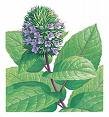


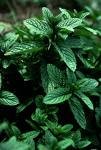
|
Peppermint
Leaf:
Peppermint (Mentha × piperita)
is a hybrid mint, a cross between watermint (Mentha aquatica) and spearmint
(Mentha spicata). It is native to western, central and southern Europe
from the British Isles east to southern Scandinavia and western Russia,
south to Iberia, and southeast to the Balkans, being found wild occasionally
with its parent species.
What does
it do?
Peppermint has a high menthol
content, and is often used as a flavouring in tea, ice cream, confectionery,
chewing gum, and toothpaste. The oil also contains menthone and menthyl
esters. It is the oldest and most popular flavour of mint-flavoured confectionery.
Peppermint can also be found in some shampoos and soaps, which give the
hair a minty scent and produce a cooling sensation on the skin. Peppermint,
like many spices and herbs, is believed to have medicinal properties when
consumed. It is said that it helps against upset stomachs, inhibits the
growth of certain bacteria, and can help soothe and relax muscles when
inhaled or applied to the skin. Other health benefits are attributed to
the high manganese, vitamin C and vitamin A content; as well as trace
amounts of various other nutrients such as fibre, iron, calcium, folate,
potassium, tryptophan, magnesium, omega-3 fatty acids, riboflavin, and
copper. Freeze-dried leavesIn 2007, Italian investigators reported that
75% of the patients in their study who took peppermint oil capsules for
four weeks had a major reduction in irritable bowel syndrome (IBS) symptoms,
compared with just 38% of those who took a placebo pill. Similarly, some
poorly designed earlier trials found that peppermint oil has the ability
to reduce colicky abdominal pain due to IBS with an NNT (number needed
to treat) around 3.1, but the oil is an irritant to the stomach in the
quantity required and therefore needs wrapping for delayed release in
the intestine. Peppermint relaxes the gastro-oesophageal sphincter, thus
promoting belching.
|
| |
|
|
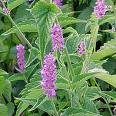
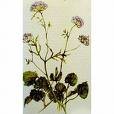
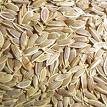

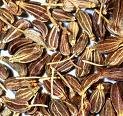
|
Anise
Seed:
Anise or Aniseed, less commonly
anís (stressed on the second syllable) (Pimpinella anisum), is a flowering
plant in the family Apiaceae, native to the eastern Mediterranean region
and southwest Asia. It is a herbaceous annual plant growing to 1m tall.
The leaves at the base of the plant are simple, 2-5 cm long and shallowly
lobed, while leaves higher on the stems are feathery pinnate, divided
into numerous leaflets. The flowers are white, 3 mm diameter, produced
in dense umbels. The fruit is an oblong dry schizocarp, 3-5 mm long.
What
does it do?
Anise, like fennel, contains
anethole, and is known to be a phytoestrogen. Anise is a mild antiparasitic
and its leaves can be used to treat digestive problems, relieve toothache,
and its essential oil to treat lice and scabies. In aromatherapy, aniseed
essential oil is used to treat colds and flu. According to Pliny the Elder,
anise was used as a cure for sleeplessness, chewed with alexanders and
a little honey in the morning to freshen the breath, and when mixed with
wine as a remedy for scorpion stings (N.H. 20.72). In the Mediterranean,
aniseed is used in producing alcoholic beverages, such as Arak (Lebanon),
Ouzo (Greece) and Raki in Turkey. In Indian cuisine, no distinction is
made between anise and fennel. Therefore, the same name (saunf) is usually
given to both of them. Some use the term patli (thin) saunf or velayati
(foreign) saunf to distinguish anise from fennel In Thailand it is used
to flavor tea. In Pakistan boiling water is poured over about a tablespoon
of aniseed in a teacup to make a hot tea.
|
|
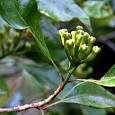



|
Clove
Bud:
Cloves (Syzygium aromaticum,
syn. Eugenia aromaticum or Eugenia caryophyllata) are the aromatic dried
flower buds of a tree in the family Myrtaceae. Cloves are native to Indonesia
and used as a spice in cuisine all over the world. The name derives from
French clou, a nail, as the buds vaguely resemble small irregular nails
in shape. Cloves are harvested primarily in Zanzibar, Indonesia and Madagascar;
it is also grown in Pakistan, India, and Sri Lanka. The clove tree is
an evergreen which grows to a height ranging from 10-20 m, having large
oval leaves and crimson flowers in numerous groups of terminal clusters.
The flower buds are at first of a pale color and gradually become green,
after which they develop into a bright red, when they are ready for collecting.
Cloves are harvested when 1.5-2 cm long, and consist of a long calyx,
terminating in four spreading sepals, and four unopened petals which form
a small ball in the centre.
What
does it do?
Cloves are used in Ayurveda
called Lavang in India, Chinese medicine (Ravi & Jagdish) and western
herbalism and dentistry where the essential oil is used as an anodyne
(painkiller) for dental emergencies. Cloves are used as a carminative,
to increase hydrochloric acid in the stomach and to improve peristalsis.
Cloves are also said to be a natural antihelmintic. The essential oil
is used in aromatherapy when stimulation and warming is needed, especially
for digestive problems. Topical application over the stomach or abdomen
will warm the digestive tract. In Chinese medicine cloves or ding xiang
are considered acrid, warm and aromatic, entering the kidney, spleen and
stomach meridians, and are notable in their ability to warm the middle,
direct stomach qi downward, to treat hiccough and to fortify the kidney
yang. Because the herb is so warming it is contraindicated in any persons
with fire symptoms and according to classical sources should not be used
for anything except cold from yang deficiency. As such it is used in formulas
for impotence or clear vaginal discharge from yang deficiency, for morning
sickness together with ginseng and patchouli, or for vomiting and diarrhea
due to spleen and stomach coldness. This would translate to hypochlorhydria.
Ayurvedic herbalist K.P. Khalsa, RH (AHG), uses cloves internally as a
tea and topically as an oil for hypotonic muscles, including for multiple
sclerosis. This is also found in Tibetan medicine. Ayurvedic herbalist
Alan Tilotson, RH (AHG) suggests avoiding more than occasional use of
cloves internally in the presence of pitta inflammation such as is found
in acute flares of autoimmune diseases. In West Africa, the Yorubas use
cloves infused in water as a treatment for stomach upsets, vomitting and
diarrhoea.The infusion is called Ogun Jedi-jedi.
|
|
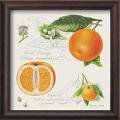

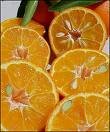
|
Tangerine
Oil:
Historically, the name tangerine
comes from Tangier, Morocco, the port from which the first tangerines
were shipped to Europe. The adjective tangerine, from Tangier or Tanger,
was first recorded as an English word in 1710.
What does
it do?
Tangerines are a good source
of vitamin C, folate and beta-carotene. They also contain some potassium,
magnesium and vitamins B1, B2 & B3.
|
|

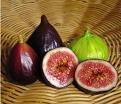
|
Fig:
Ficus is a genus of about 800
species of woody trees, shrubs, vines, epiphytes, and hemi-epiphytes in
the family Moraceae. Collectively known as figs, they are native throughout
the tropics with a few species extending into the warm temperate zone.
The so-called Common Fig (F. carica) is a temperate species from the Middle
East and southern Europe, which has been widely cultivated from ancient
times for its fruit, also referred to as figs. The fruit of most other
species are also edible though they are usually of only local economic
importance or eaten as bushfood. However, they are extremely important
food resources for wildlife. Figs are also of paramount cultural importance
throughout the tropics, both as objects of worship and for their many
practical uses.
What
does it do?
Figs are one of the highest
plant sources of calcium. Figs have phosphorus, potassium, beta-carotene,
vitamin C. Figs are a laxative and contain antioxidants. Figs are good
source of flavonoids and polyphenols. In one study, a 40 gram portion
of dried figs (two medium size figs) produced significant increase in
plasma antioxidant capacity. Figs also have higher quantities of
|
|
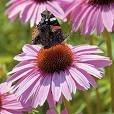
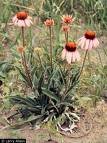


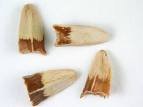

|
Echinacea:
Echinacea, commonly called
Purple coneflower, is a genus of nine species of herbaceous plants in
the Family Asteraceae. All are strictly native to eastern and central
North America. The plants have large showy heads of composite flowers,
blooming from early to late summer. Some species are used in herbal medicines.
E. purpurea flower centreThe genus name is from the Greek echino, meaning
"spiny", due to the spiny central disk. They are herbaceous, drought-tolerant
perennial plants growing to 1 or 2 m in height. There are three varieties
of Echinacea: Echinacea purpurea, Echinacea pallida, and Echinacea angustifolia.
All three varieties are used to boost the immune system and fight infections,
but only the purpurea and pallida varieties have been shown to be effective.
What
does it do?
However, a University of Maryland
review of available studies concluded that Echinacea, when taken at first
sign of a cold, reduced cold symptoms or shortened their duration. This
conclusion was based on 13 European studies.[3] The University of Maryland
study also found that three of four studies concluded that taking Echinacea
to prevent a cold was ineffective, although including studies that use
subclinical doses, the wrong part or unassayed material will bias such
conclusions. Another scientific review of 14 published studies found that
the incidence of colds was reduced by 58% and the duration by a day and
half. Echinacea works to increase the activity of the immune system by
stimulating white blood cells, which attack the viruses and bacteria that
lead to illness or infection. This also makes it very beneficial for people
with AIDS since their immune systems are weakened. This application of
Echinacea is being extensively researched, since the full effect of the
immune system on AIDS and cancer is still unknown. Echinacea is also every
effective in treating respiratory ailments like colds. Some research has
found Echinacea to be effective as an antiviral or antifungal, which also
helps it fight infection. The full potential of Echinacea, for these applications
and others, still needs to be thoroughly studied. In some parts of Europe,
Echinacea is taken in an IV as supplemental treatment for some forms of
cancer. Some European medical professionals also inject Echinacea to remedy
infections of the urinary tract. However, neither of these practices are
common in America. Echinacea can also be used externally to treat skin
conditions like eczema and psoriasis. It can also be an ingredient in
hemorrhoid treatments or to sooth inset bites. Some people use it to shield
their skin from sun damage.
|
|


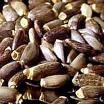

|
Milk
Thistle Seed:
Milk thistles are thistles
of the genus Silybum Adans., flowering plants of the daisy family (Asteraceae).
They are native to the Mediterranean regions of Europe, North Africa and
the Middle East. Whilst health uses mostly for chronic liver disease have
been traditionally claimed for the plant, increasing research is being
undertaken on this and other possible medical uses.
What
does it do?
Milk thistle has been reported
to have protective effects on the liver and to improve its function. It
is typically used to treat liver cirrhosis, chronic hepatitis (liver inflammation),
and gallbladder disorders. The active compound in Milk thistle is silymarin,
a mixture of at least 4 closely related flavonolignans, 60% to 70% of
which is a mixture of 2 diastereomers of silybin. Silymarin is typically
administered in amount ranging from 200-500mg per day. Whether or not
these dosages are optimal is not known; no scientific data on which to
base effective dosage level guidelines is available. Research into the
biological activity of silymarin and its possible medical uses has been
conducted in many countries since the 1970s, but the quality of the research
has been uneven. Reviews of the literature covering clinical studies of
silymarin vary in their conclusions. A review using only studies with
both double-blind and placebo protocols concluded that milk thistle and
its derivatives "does not seem to significantly influence the course of
patients with alcoholic and/or hepatitis B or C liver diseases."A different
review of the literature, performed for the U. S. Department of Health
and Human Services, found that, while there is strong evidence of legitimate
medical benefits, the studies done to date are of such uneven design and
quality that no firm conclusions about degrees of effectiveness for specific
conditions or appropriate dosage can yet be made. A review of studies
of silymarin and liver disease which are available on the web shows an
interesting pattern: studies which tested low dosages of silymarin concluded
that silymarin was ineffective while studies which used significantly
larger doses concluded that silymarin was biologically active and had
theraputic effects.
|
| |
Dandelion
root:
The common name Dandelion is
given to species of the genus Taraxacum, a large genus of flowering plants
in the family Asteraceae. In the Asteraceae (formerly Compositae) the
'flowers' are morphologically a composite flower head consisting of many
tiny flowers called florets. The dandelion is native to Europe and Asia,
and has been introduced to many other places. Taraxacum species reproduce
asexually by means of apomixis and seed production commonly occurs without
pollination.
What
does it do?
The leaves (called dandelion
greens) can be eaten cooked or raw in various forms, such as in soup or
salad. They are probably closest in character to mustard greens. Usually
the young leaves and unopened buds are eaten raw in salads, while older
leaves are cooked. Raw leaves have a slightly bitter taste. Dandelion
salad is often accompanied with hard boiled eggs. The leaves are high
in vitamin A, vitamin C and iron, carrying more iron and calcium than
spinach. Dandelion flowers can be used to make dandelion wine, for which
there are many recipes. It has also been used in a saison ale called Pissenlit
(literally "wet the bed" in French) made by Brasserie Fantôme in Belgium.
Another recipe using the plant is dandelion flower jam. Ground roasted
dandelion root can be used as a coffee substitute. Dandelion root is a
registered drug in Canada, sold principally as a diuretic. A leaf decoction
can be drunk to "purify the blood", for the treatment of anemia, jaundice,
and also for nervousness. Drunk before meals, dandelion root coffee is
claimed to stimulate digestive functions and function as a liver tonic.
"Dandelion and Burdock" is a soft drink that has long been popular in
the United Kingdom with authentic recipes sold by health food shops. It
is unclear whether cheaper supermarket versions actually contain extracts
of either plant. The milky latex has been used as a mosquito repellent;
the milk is also applied to warts, helping get rid of them without damaging
the surrounding skin. Yellow or green dye colours can be obtained from
the flowers but little colour can be obtained from the roots of the plant.
|
| |
Gentain root |
| |
Wormwood leaf:
What does it do?
|
| |
Mojave Chaparral herb |
| |
Black Walnut hull |
| |
Hawaiian Yellow Ginger root |
| |
Fennel
Seed:
Fennel (Foeniculum vulgare)
is a plant species in the genus Foeniculum (treated as the sole species
in the genus by most botanists). It is a hardy, perennial, umbelliferous
herb, with yellow flowers and feathery leaves, grows wild in most parts
of temperate Europe, but is generally considered indigenous to the shores
of the Mediterranean, whence it spreads eastwards to India. It has followed
civilization, especially where Romans have colonized, and may be found
growing wild in many parts of the world upon dry soils near the sea-coast
and upon river-banks. It is a member of the family Apiaceae. It is a highly
aromatic and flavorful herb with culinary and medicinal uses, and is one
of the primary ingredients of absinthe. Fennel is used as a food plant
by the larvae of some Lepidoptera species including the Mouse Moth and
the Anise Swallowtail.
What
does it do?
Florence fennel was one of
the three main herbs used in the preparation of absinthe, an alcoholic
mixture which originated as a medicinal elixir in Switzerland and became,
by the late 19th century, a popular alcoholic drink in France and other
countries. Due to the belief that absinthe possessed psychoactive properties
beyond those of alcohol, it was banned in most countries by 1915, but
a recent relaxation of laws governing its production, importation and
sale has caused a moderate resurgence in modern day consumption. Fennel
itself is known to be a stimulant,[6] although many modern preparations
marketed under the name "absinthe" do not make use of it. Fennel contains
anethole, which can explain some of its effects: it, or its polymers,
act as phytoestrogens.[8] On account of its aromatic and carminative properties,
Fennel is chiefly used medicinally with purgatives to allay their side
effects and for this purpose forms one of the ingredients of the well-known
compound Liquorice Powder. Fennel water has properties similar to those
of anise and dill water: mixed with sodium bicarbonate and syrup, these
waters constitute the domestic 'Gripe Water,' used to correct the flatulence
of infants. Essential oil of Fennel has these properties in concentration.
Fennel tea, formerly also employed as a carminative, is made by pouring
boiling water on a teaspoonful of bruised Fennel seeds. Syrup prepared
from Fennel juice was formerly given for chronic coughs. Fennel is also
largely used for cattle condiments. It is one of the plants which is said
to be disliked by fleas, and powdered Fennel has the effect of driving
away fleas from kennels and stables.
|
| |
Artichoke leaf |
| |
Burdock root |
| |
Cardamon seed |
| |
Pau d'Arco bark |
| |
Cinnamon bark |
| |
Clove bud |
| |
Licorice root |
| |
Juniper berry |
| |
Black Peppercorn |
| |
Uva Ursi |
| |
Horsetail herb |
| |
Parsley root |
| |
|
| |
|
| |
|
| |
|
| |
|
| |
|
| |
|
| |
|
| |
|
| |
|
| |
|
| |
|
| |
|
| |
|
| |
|
| |
|
| |
|
| |
|
| |
|
| |
|
| |
|
| |
|
| |
|
| |

![]()
![]()

![]()
![]()
![]()
![]()


![]()














![]()































































































































